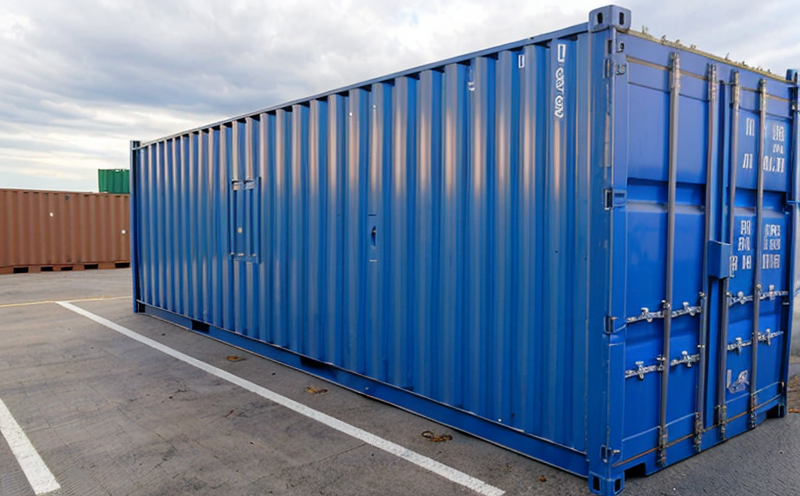UNE EN ISO 21306 Polymer Identification Testing of Plastic Storage Plastics
The UNE EN ISO 21306 standard provides a standardized approach to identifying polymers in plastic containers and storage materials, ensuring compliance with international quality standards. This service is crucial for manufacturers, suppliers, and buyers who require accurate polymer identification to meet regulatory requirements and ensure product integrity.
Identifying the correct polymer type within plastic containers can significantly impact performance characteristics such as chemical resistance, durability, and compatibility. For instance, polyethylene (PE) and high-density polyethylene (HDPE) differ in their density, mechanical properties, and chemical stability. Proper identification allows for precise selection of materials that meet specific application needs.
The testing process involves several steps including sample preparation, solvent extraction, and spectroscopic analysis. Sample preparation may include grinding or cutting the plastic to ensure a uniform sample size. Solvent extraction is used to dissolve the polymer, making it easier to analyze with spectroscopic methods such as infrared (IR) spectroscopy or near-infrared (NIR) spectroscopy.
Once extracted, the polymer is analyzed using spectroscopic techniques which can differentiate between various polymer types by their unique spectral signatures. This method ensures accurate identification even when dealing with complex mixtures of polymers present in multi-layered plastic containers.
The importance of this testing cannot be overstated as incorrect polymer identification could lead to failures during storage or transportation conditions, affecting product performance and ultimately leading to customer dissatisfaction. By ensuring correct polymer identification through UNE EN ISO 21306 compliant methods, laboratories can provide reliable data that supports informed decision-making throughout the supply chain.
A key advantage of this testing method lies in its ability to identify not just one but multiple layers within multi-layered containers used for food and chemical storage. This is particularly important given increasing demand from industries where contamination risks are high.
- Accurate identification of polymer types ensures compliance with regulatory requirements
- Aids in selecting appropriate materials based on required performance characteristics
- Helps prevent potential issues arising from incorrect material choices
- Supports the development of safer and more effective products for end users
In conclusion, UNE EN ISO 21306 polymer identification testing plays a vital role in maintaining quality standards within the plastics industry. It helps manufacturers produce reliable products that meet customer expectations while also adhering to stringent regulatory guidelines.
Benefits
The implementation of UNE EN ISO 21306 compliant polymer identification testing offers numerous advantages across various sectors:
- Enhanced Quality Control: Ensures consistent product quality by identifying the correct polymer type before manufacturing begins.
- Better Regulatory Compliance: Avoids non-compliance penalties and ensures adherence to international standards.
- Informed Decision Making: Provides accurate data for R&D teams when developing new products or improving existing ones.
- Increased Customer Satisfaction: By delivering reliable, high-quality products that meet specifications, customers are more likely to be satisfied with their purchases.
These benefits translate into improved brand reputation and increased market share for businesses operating in the plastics industry. Additionally, it fosters trust among stakeholders by demonstrating a commitment to quality and safety practices.
Quality and Reliability Assurance
The accuracy of UNE EN ISO 21306 polymer identification testing is paramount for maintaining high standards of quality within the plastics industry. To achieve this, rigorous procedures are followed throughout every stage of the testing process:
- Sample Preparation: Careful handling and preparation ensure that samples are representative of the entire batch.
- Solvent Extraction: The appropriate solvents are chosen to dissolve only the desired polymers without affecting other components of the sample.
- Spectroscopic Analysis: State-of-the-art equipment is used to analyze extracted polymers, ensuring precise identification based on spectral signatures.
Our laboratory adheres strictly to these procedures and employs highly skilled professionals who are trained in UNE EN ISO 21306 techniques. Regular calibration of instruments ensures consistent results over time, while internal audits guarantee adherence to best practices at all times.
In addition to technical expertise, we also offer comprehensive training programs for clients interested in learning more about polymer identification testing methods. This helps them better understand the importance of accurate identification and how it impacts their operations.
Competitive Advantage and Market Impact
- Innovation: By identifying new applications for existing polymers, businesses can stay ahead of competitors by exploring untapped markets.
- Cost Efficiency: Accurate identification reduces waste and rework costs associated with incorrect material choices.
- Brand Reputation: Demonstrating a commitment to quality through UNE EN ISO 21306 compliant practices enhances brand image among consumers.
- Market Expansion: Meeting stringent regulatory requirements opens up opportunities for entering new markets where these standards are enforced.
The use of UNE EN ISO 21306 polymer identification testing not only supports internal processes but also contributes positively to the overall market environment. It encourages fair competition among peers who adhere to similar high-quality benchmarks, ultimately benefiting consumers by providing safer and more reliable products.





